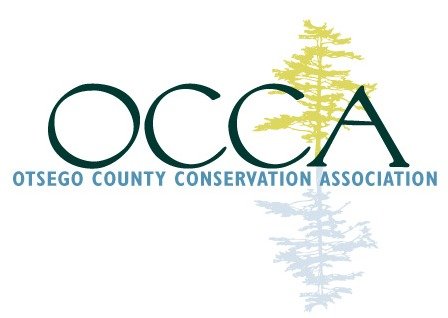Hemlock Hunters
For some people, the best thing about winter cold is the disappearance of “bugs.” No more biting flies or mosquitoes, dangling caterpillars or buzzing yellow jackets. The insects that sometimes seem to plague our outdoor activities take a break, giving us a break in turn.
But there’s one insect that becomes more active in winter, and it’s one you can keep an eye out for while snowshoeing, cross country skiing, or making snow angels: the hemlock woolly adelgid (Adelges tsugae). An invader from southern Japan, this tiny, aphid-like insect feeds exclusively on hemlocks, a critical—and beautiful tree in our forests. Due to the adelgid’s unusual life cycle, the lack of HWA predators and parasites, and no natural resistance to the insect in our hemlocks, HWA can reproduce at an alarming rate. Once established, HWA can kill a hemlock tree in less than a decade.
While most insects and small arthropods seek shelter and go dormant during winter, hemlock woolly adelgid actively feeds, protected by the “wool” that gives it its name. The wool (actually a wax-like substance produced by glands on the adelgid’s abdomen) insulates the insect, protecting it from all but the coldest weather. It also serves as an ovisac, where the adelgid lays its 50-300 eggs late winter or early spring.
But it’s this wool that also allows us to find the hemlock woolly adelgid, and that’s where you can help. Any time you find yourself out among hemlock trees, you can grab a branch and look for hemlock woolly adelgid. Here’s what to do:
-Flip the branch and look at the underside of the twig.
-Start at the tip and work your way back about a foot or so.
-Look carefully for white or grayish-white, cottony or woolly masses. Note, while we refer to them as “woolly masses,” they’re actually quite small, generally no more than 1/8” an inch across.
-Check branches on multiple sides of the tree.
If you think you’ve found hemlock woolly adelgid, report it. The best way is to use iMapInvasives, an invasive species database and management tool. You can either sign up for a free account or report an invasive without an account (see https://www.nyimapinvasives.org/). Or you can email a report to OCCA—use programdirector@occainfo.org. Include the following in your email:
-A picture of the suspected HWA. Hint: putting your hand behind the branch helps focus your camera, and it provides scale.
- Property address, GPS coordinates (if possible), and detailed notes on where the tree is found, including landmarks, nearest trail junction, etc.
-Notes on the infestation itself: was the tree badly infested? How many trees were infested, etc.
-Contact information in case we need to reach you.
In New York, hemlock woolly adelgid is well-established in the Hudson Valley, the Catskills and across much of the Southern Tier. It is currently spreading into Otsego County and has been found in a few locations here. OCCA is working with multiple partners and volunteers to survey for this destructive pest. You can join us on Friday mornings from January to April on our surveys, or you can sign up to “adopt a hemlock” and carry out surveys on your own. For details on how to participate, contact me at (607) 282-4087, or by email at programdirector@occainfo.org.
PS. This article is a little short to go into great detail about HWA’s unusual life cycle, the importance of hemlock trees, or the impacts of HWA. For more information, visit the New York State Hemlock Initiative ( https://blogs.cornell.edu/nyshemlockinitiative/ ), New York State Department of Environmental Conservation (https://dec.ny.gov/nature/animals-fish-plants/insects-and-other-species/hemlock-woolly-adelgid) and the New York Invasive Species Information Clearinghouse (https://nyis.info/invasive_species/hemlock-woolly-adelgid/)
